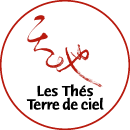How to infuse your tea?
A few simple tips to brew your tea, get the most of the flavors and benefits of your teas.
We recommend 4 to 7 gr of tea for 15 to 20 cl of water for multiple infusions.
Infusion times are given as an indication. One will adapt according to their taste, the teawares and the amount of water used. The attention paid to your tea will be your best guide. These infusion times vary according also to tea shape, especially for the first brewing.
NB: rolled and compressed teas will take longer to flourish in the teapot. Anyway, the care brought to your tea and its brewing will be your best guide.
On our tasting sheets, we use a suitable amount of 120 ml of water in a porcelain gaiwan.
These infusion times vary according also to tea shape, loose tea leaves, rolled teas, pressed teas, especially for the first brewing. Rolled and compressed teas need a little time to open up in the teapot. In the end, the care brought to your tea and its preparation will be your best guide...
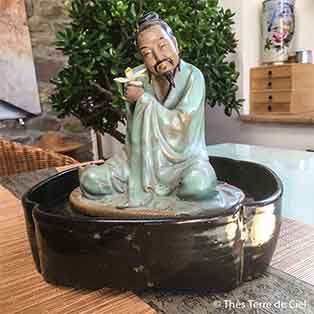
« En arrivant ici
J’entre d'emblée dans le pays du thé
D'humeur badine
J'ai le sourire aux lèvres. »
Lu Tung

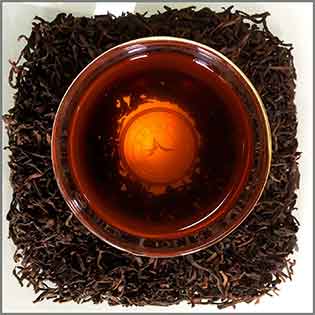
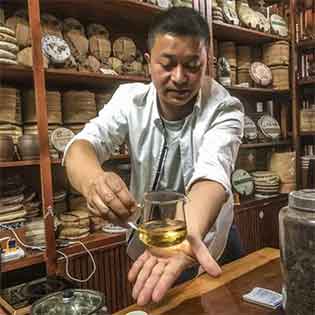
Equipment and teaware
Porcelaine and glass are neutral materials, so it is possible to use them in the form of teapots, pots, infusers or gaiwans for any type of tea. We recommend either of these if you have only one piece of equipment to infuse your tea.
-
- Jindezhen porcelain, with its luminous white and subtle bluish tint, tends to be amateurs first choice.
- - Noble clays of Yi Xing or Jiangshui: the beautiful little teapots used for Gong Fu Cha are made with these clays. They absorb a tiny amount of tea during infusion, which builds up a coating over time and enhances the tea's flavours. Therefore each teapot should only be used for one specific type of tea. About Jianshui teapot
Water
« L'eau d'une source de montagne est la meilleure, vient ensuite l'eau de la rivière et en dernier lieu l'eau du puit. » (Le classique du thé de LU YU).
The ideal is therefore a soft and very pure water. Each one will adapt depending on their supplies whilst aiming towards this standard. A filtered water is the minimum requirement, not hard and neutral in taste.
Temperature
Raw or ripe Pu'Erh teas: very hot water, 90-95°C approx.
Black teas: very hot water, 90-95°C approx.
Green teas: 80-85°C.
White teas: around 80°C.
Oolong teas: 80-85°C
Whatever the tea, always let water rest for a few moments after boiling to lower the temperature.
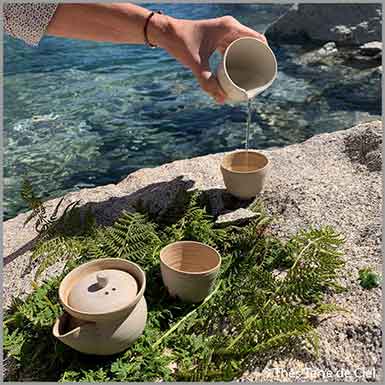
Brewing the tea
We recommend 4 to 7 gr of tea for 15 to 20 cl of water for multiple infusions.
Infusion times are given as an indication. One will adapt according to their taste the material and the quantities of water used: the attention paid to your tea and its preparation will be your best guide.
- Raw Pu'Erh: 5 to 7 gr - very short and multiple infusions (30 s, next 1min to 1.30 mins)
- Ripe Pu'Erh:5 to 7 gr, 1 to 2 mins, multiple infusions
- Black tea: 4 to 5 gr, 2 to 3 mins, several infusions
- Green tea: 4 to 5 gr, 2 at 3 mins, several infusions
- White tea: 4 to 5 gr, 3 mins, several infusions
- Oolong tea: 4 to 5 gr, 2 to 3 mins, several infusions
Put the tea directly in the teapot, avoid «tea balls» and filters (even paper). So the tea cakes can spread and the rolled leaves will unfold freely.
Cover the leaves with hot water, wait 10 seconds. Discard the first water.
Then infuse the leaves and drink. Do the same for successive infusions even several hours apart. In this case, empty the water from your teapot between two sessions.
Enjoy! He Cha!
This site uses only internal cookies for its operation and audience measurement.
